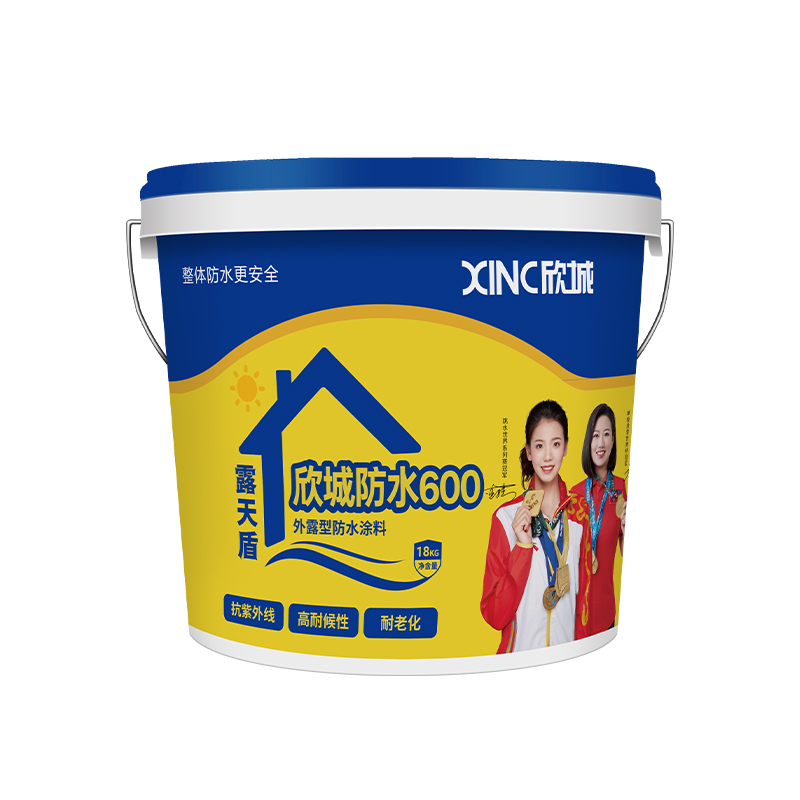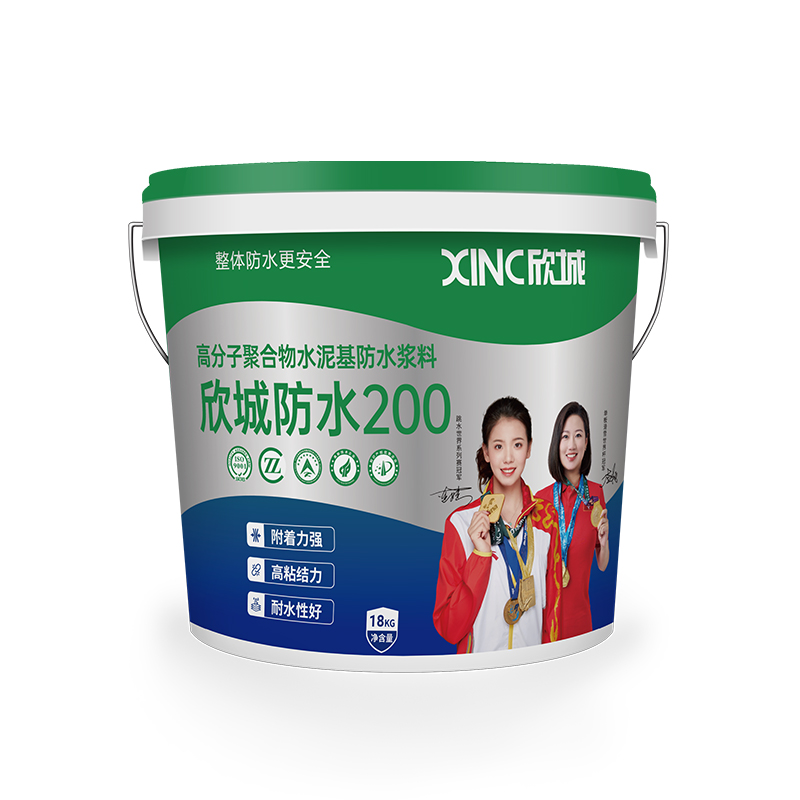How does the thermoplastic polyolefin substrate in TPO waterproof membrane affect its low-temperature crack resistance?
Release Time : 2025-11-17
TPO waterproof membrane, as a high-performance and environmentally friendly building waterproofing material, has been widely used in roofing, underground engineering, and green building in recent years. One of its core advantages lies in its excellent low-temperature crack resistance, which is mainly attributed to its unique thermoplastic polyolefin substrate structure.
1. Molecular Structure Characteristics of Thermoplastic Polyolefin
TPO waterproof membrane is typically composed of an ethylene-propylene rubber phase and a polypropylene plastic phase through dynamic vulcanization or physical blending, forming an "island structure": a soft rubber phase dispersed within a rigid continuous polyolefin phase. This two-phase structure endows the material with both high elasticity and thermoplastic processability. At low temperatures, the rubber phase maintains the mobility of molecular chain segments, effectively absorbing and dispersing stress to prevent brittle fracture; while the polypropylene phase provides the necessary strength and dimensional stability. The synergistic effect of both significantly delays the glass transition of the material at low temperatures, thereby improving crack resistance.
2. Relationship between Low-Temperature Toughness and Glass Transition Temperature
The low-temperature crack resistance of a material is closely related to its glass transition temperature. The lower the temperature gradient (Tg), the stronger the material's ability to maintain flexibility in cold environments. By controlling the type, proportion, and molecular weight distribution of the rubber phase, the overall Tg of TPO substrates can be lowered to below -50°C. This means that even in harsh winters in frigid regions, the roll material can maintain good ductility and resilience, and is less prone to micro-cracks due to thermal expansion and contraction or external impacts. In contrast, traditional PVC roll materials, due to the easy migration and exudation of plasticizers, tend to harden and become brittle at low temperatures, resulting in significantly inferior crack resistance.
3. Additives' Enhancement of Low-Temperature Performance
While the substrate itself determines the basic low-temperature performance of the TPO waterproof membrane, functional additives also play a crucial supporting role. For example, certain types of compatibilizers can improve the interfacial bonding between the rubber phase and the polyolefin phase, reducing microscopic defects; while some flexible antioxidants not only delay aging but also maintain molecular chain mobility at low temperatures. It is worth noting that TPO does not contain phthalate plasticizers, avoiding the low-temperature embrittlement problem caused by plasticizer volatilization or migration, which is one of its core advantages in maintaining long-term low-temperature crack resistance.
4. Actual Engineering Performance and Standard Verification
Multiple domestic and international testing standards specify clear requirements for the low-temperature bending performance of TPO waterproof membranes, typically requiring no cracking at -40℃. High-quality TPO products can even pass dynamic puncture or repeated bending tests at -50℃, demonstrating their reliability in extremely cold climates. In practical applications in northern high-altitude or frigid regions, TPO rolls exhibit excellent durability, with very few leaks caused by low-temperature cracking.
5. Future Optimization Directions
To further improve low-temperature crack resistance, the industry is exploring the introduction of novel elastomer copolymers, nanofillers, or microphase separation control technologies to construct more refined multiphase structures. Simultaneously, reducing the crystallinity of polypropylene through molecular design can also reduce internal stress concentration at low temperatures, thereby enhancing overall toughness.
The low-temperature crack resistance of TPO waterproof membranes essentially stems from the unique two-phase structure of its thermoplastic polyolefin substrate and its plasticizer-free formulation. This structure not only endows the material with excellent flexibility and cold resistance but also ensures performance stability during long-term use. With advancements in materials science, TPO membranes will continue to improve their adaptability to extreme climates, providing more reliable and sustainable solutions for building waterproofing projects worldwide.
1. Molecular Structure Characteristics of Thermoplastic Polyolefin
TPO waterproof membrane is typically composed of an ethylene-propylene rubber phase and a polypropylene plastic phase through dynamic vulcanization or physical blending, forming an "island structure": a soft rubber phase dispersed within a rigid continuous polyolefin phase. This two-phase structure endows the material with both high elasticity and thermoplastic processability. At low temperatures, the rubber phase maintains the mobility of molecular chain segments, effectively absorbing and dispersing stress to prevent brittle fracture; while the polypropylene phase provides the necessary strength and dimensional stability. The synergistic effect of both significantly delays the glass transition of the material at low temperatures, thereby improving crack resistance.
2. Relationship between Low-Temperature Toughness and Glass Transition Temperature
The low-temperature crack resistance of a material is closely related to its glass transition temperature. The lower the temperature gradient (Tg), the stronger the material's ability to maintain flexibility in cold environments. By controlling the type, proportion, and molecular weight distribution of the rubber phase, the overall Tg of TPO substrates can be lowered to below -50°C. This means that even in harsh winters in frigid regions, the roll material can maintain good ductility and resilience, and is less prone to micro-cracks due to thermal expansion and contraction or external impacts. In contrast, traditional PVC roll materials, due to the easy migration and exudation of plasticizers, tend to harden and become brittle at low temperatures, resulting in significantly inferior crack resistance.
3. Additives' Enhancement of Low-Temperature Performance
While the substrate itself determines the basic low-temperature performance of the TPO waterproof membrane, functional additives also play a crucial supporting role. For example, certain types of compatibilizers can improve the interfacial bonding between the rubber phase and the polyolefin phase, reducing microscopic defects; while some flexible antioxidants not only delay aging but also maintain molecular chain mobility at low temperatures. It is worth noting that TPO does not contain phthalate plasticizers, avoiding the low-temperature embrittlement problem caused by plasticizer volatilization or migration, which is one of its core advantages in maintaining long-term low-temperature crack resistance.
4. Actual Engineering Performance and Standard Verification
Multiple domestic and international testing standards specify clear requirements for the low-temperature bending performance of TPO waterproof membranes, typically requiring no cracking at -40℃. High-quality TPO products can even pass dynamic puncture or repeated bending tests at -50℃, demonstrating their reliability in extremely cold climates. In practical applications in northern high-altitude or frigid regions, TPO rolls exhibit excellent durability, with very few leaks caused by low-temperature cracking.
5. Future Optimization Directions
To further improve low-temperature crack resistance, the industry is exploring the introduction of novel elastomer copolymers, nanofillers, or microphase separation control technologies to construct more refined multiphase structures. Simultaneously, reducing the crystallinity of polypropylene through molecular design can also reduce internal stress concentration at low temperatures, thereby enhancing overall toughness.
The low-temperature crack resistance of TPO waterproof membranes essentially stems from the unique two-phase structure of its thermoplastic polyolefin substrate and its plasticizer-free formulation. This structure not only endows the material with excellent flexibility and cold resistance but also ensures performance stability during long-term use. With advancements in materials science, TPO membranes will continue to improve their adaptability to extreme climates, providing more reliable and sustainable solutions for building waterproofing projects worldwide.







